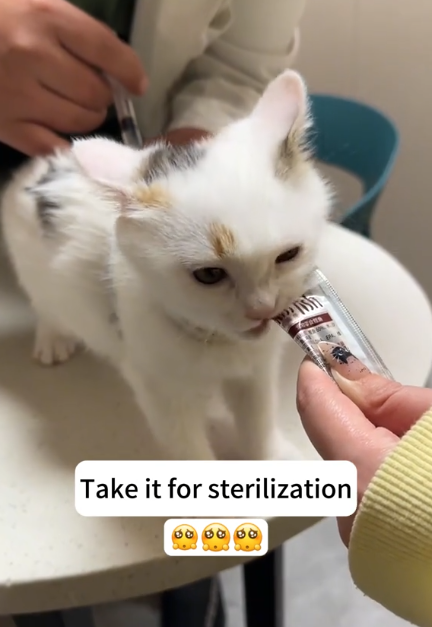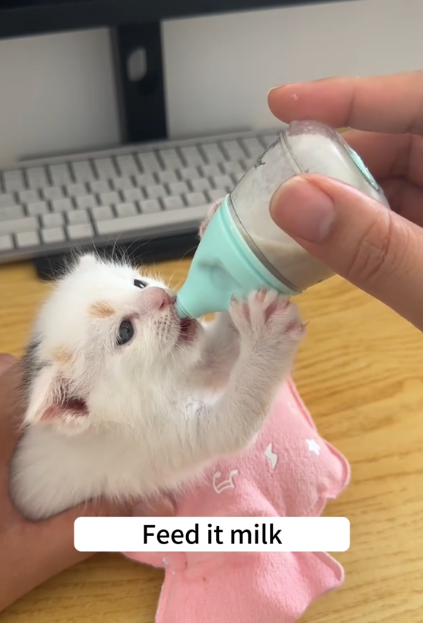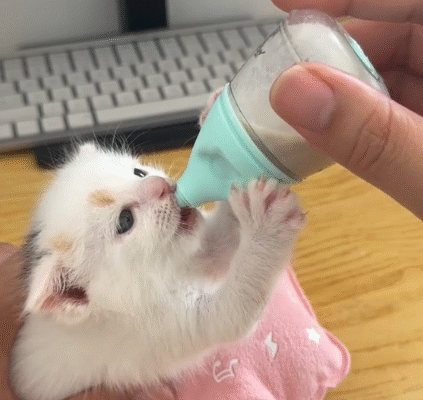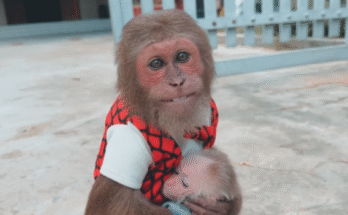
Sometimes, life places the most unexpected gifts right in our path—quite literally. Imagine walking home one evening and spotting a small, trembling kitten on the roadside. Its fur is dusty, its eyes wide with fear, and its meow barely audible over the noise of passing cars. Your heart softens instantly. Without overthinking, you scoop the tiny creature into your arms and decide to take it home.
It sounds like a sweet, almost cinematic moment—but what happens next? The journey of adopting a stray kitten can be filled with surprises, challenges, and joy. Let’s explore the possible stages and outcomes after you bring that little ball of fur into your home.
1. The First Hour: Shock, Curiosity, and Comfort
When you first take the kitten home, expect it to be cautious. The road it came from was loud and dangerous, and now it’s in an unfamiliar environment. The kitten may hide under furniture, peek out only when it feels safe, or curl tightly into a ball.
The first thing you should do is prepare a quiet, warm corner. A soft blanket in a box or basket will give it a sense of security. Offer fresh water, and if you have cat food, place some nearby. Don’t be surprised if the kitten doesn’t eat immediately—fear often dampens appetite.
2. The First 24 Hours: Assessment and Basic Care
Within the first day, it’s important to evaluate the kitten’s health. Roadside kittens can be exposed to fleas, ticks, worms, or even injuries. If possible, take the kitten to a veterinarian as soon as you can. The vet can check for:
- Parasites (fleas, ear mites, worms)
- Injuries or infections
- Age and nutritional needs
- Vaccination requirements
If the kitten is very young (under 8 weeks old), it may need milk formula instead of solid food. The vet will advise you on feeding schedules and care.

3. The First Week: Building Trust
In the first week, your biggest job is to make the kitten feel safe. Cats are naturally cautious creatures, and a stray may be especially wary of humans. Move slowly, speak softly, and avoid forcing interaction. Let the kitten approach you when it’s ready.
During this period, you’ll also start to see its personality emerge. Some kittens adapt quickly, becoming playful and affectionate in just a few days. Others take longer, needing time to overcome fear.
Playtime can help build trust—use a feather toy, string, or soft ball to engage the kitten without overwhelming it. Slowly, it will associate you with safety and fun.
4. The First Month: Attachment and Adaptation
By the end of the first month, you may notice a big change: the kitten starts to follow you around, sleep near you, and purr when you pet it. This is the stage where true attachment forms.
You’ll also need to work on house training if it hasn’t already learned. Most kittens adapt quickly to litter boxes, especially if you gently place them inside after meals or naps. Keep the litter box clean and in a quiet location.
During this time, schedule vaccinations, deworming, and possibly spaying or neutering when the kitten is old enough. These steps are crucial for long-term health.
5. Emotional Changes: For You and the Kitten
Picking up a stray kitten doesn’t just change the cat’s life—it changes yours. Many people find themselves feeling more responsible and compassionate after rescuing an animal. The act of saving a life creates a bond that goes beyond typical pet ownership.
For the kitten, your home becomes a safe haven. The constant threat of hunger, cold, and predators is replaced with warmth, regular meals, and affection. Over time, the once-scared little creature transforms into a confident, loving companion.
6. Possible Challenges
While the rewards are enormous, it’s important to be realistic about the challenges you may face:
- Health issues – Stray kittens can carry illnesses like feline respiratory infections or ringworm. Early vet care helps prevent serious problems.
- Behavioral issues – A kitten that has lived outside may be skittish or prone to defensive behavior. Patience is key.
- Time and cost – Food, litter, vet visits, and toys require both financial investment and daily attention.
These challenges can be managed with preparation and a willingness to learn.

7. Long-Term Happiness
Months later, the kitten you rescued from the roadside may become your shadow—following you from room to room, curling up beside you while you read, and greeting you at the door when you come home.
Rescued cats often show deep gratitude in their own way. It may be through extra cuddles, playful antics, or simply a look of trust in their eyes. You’ll realize that the decision you made that day—stooping down to lift a fragile little life off the road—was one of the best you’ve ever made.
8. The Ripple Effect
Your rescue story can inspire others. Friends, family, or neighbors who hear about your act of kindness may be encouraged to help animals in need. Sometimes, it only takes one example to spark a chain of compassion.
By adopting instead of buying, you also help reduce the number of stray animals struggling to survive. One less kitten on the street means one more life saved.
Conclusion
Picking up a little cat from the road and taking it home is more than an act of kindness—it’s the start of a shared journey. At first, there may be fear, uncertainty, and a few sleepless nights. But with patience, care, and love, that fragile roadside kitten can grow into a healthy, happy, and loyal friend.
You’ll give it safety, comfort, and a chance at a good life. In return, it will give you companionship, affection, and the quiet joy of knowing that you made a difference. Sometimes, the smallest decisions—like stopping to help a tiny cat—can have the biggest impact on both your life and theirs.



